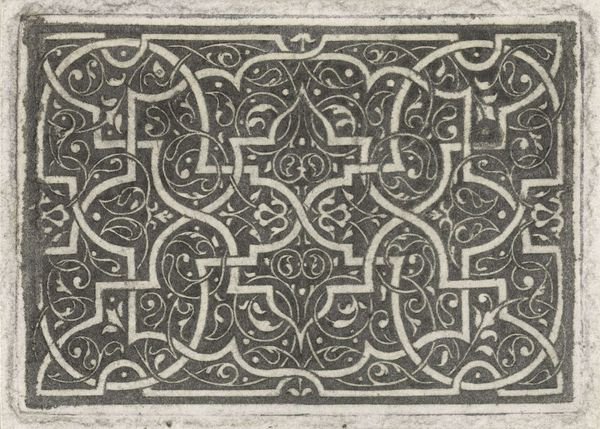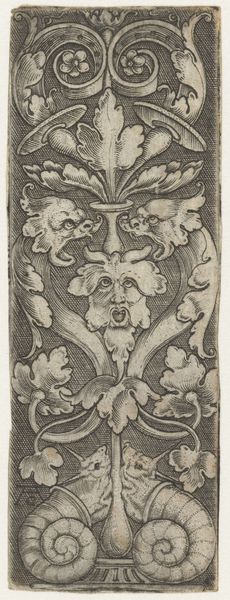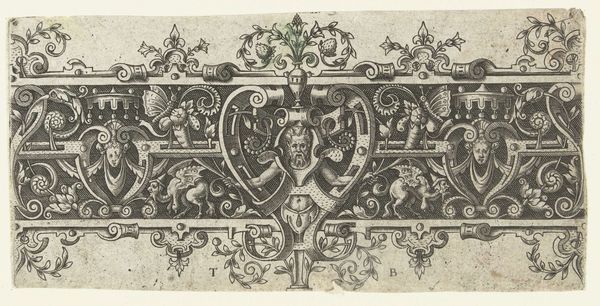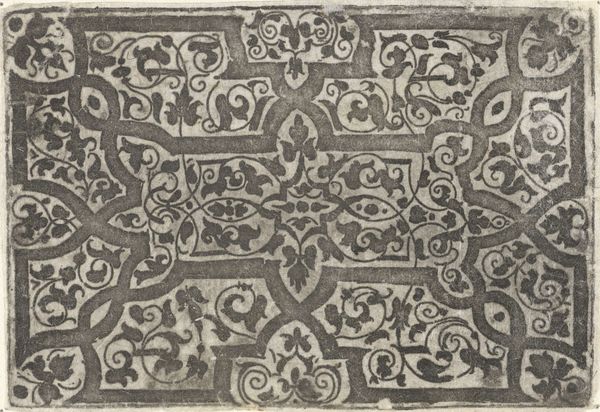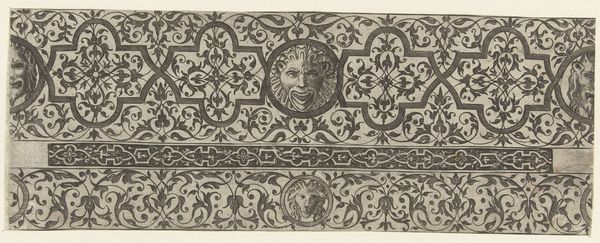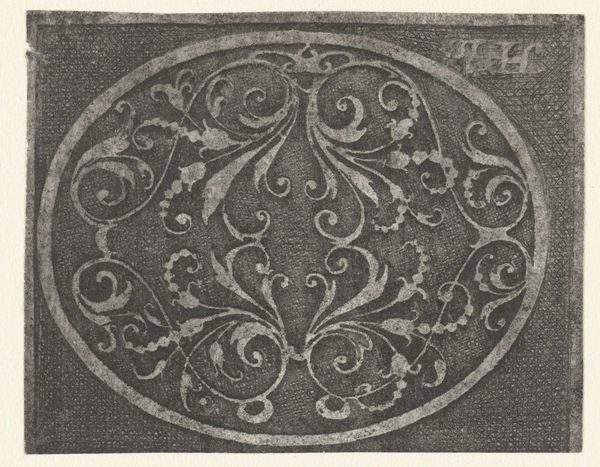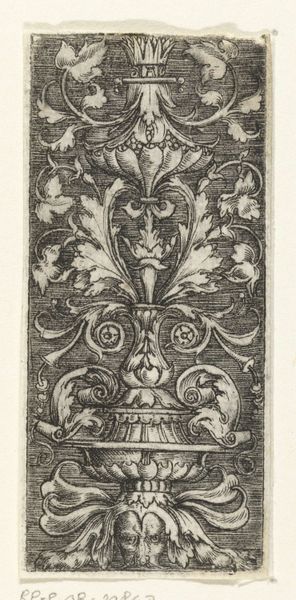
drawing, ornament, ink, engraving
#
drawing
#
ornament
#
pen drawing
#
pattern
#
ink line art
#
11_renaissance
#
ink
#
geometric
#
line
#
decorative-art
#
engraving
Dimensions: height 74 mm, width 236 mm
Copyright: Rijks Museum: Open Domain
Curator: This pen and ink drawing, known as "Frieze with moresques, in the middle a mascaron," comes to us from an anonymous hand, dating roughly between 1528 and 1580. What strikes you first about this example of decorative art? Editor: The repetition is immediately compelling. I'm struck by how such a potentially rigid geometric framework yields to these very organic, flowing shapes. It’s as if constraint breeds a kind of liberated visual vocabulary. Curator: Yes, indeed! That tension is crucial to understanding moresques, those stylized foliate ornaments popularized during the Renaissance, particularly after the rediscovery of ancient Roman art. Here, the repeating frieze embodies that dialogue. Editor: When I view patterns from this vantage, I can't help but reflect on the way "ornament" is historically coded as "feminine," or lesser-than "fine art," obscuring labor and cultural meaning. Do you think that's at play here? Curator: A provocative point. Within this period, ornament functioned quite differently. Its ubiquity served almost as a common language, uniting visual elements across architecture, metalwork, textiles, and certainly, the printed image. This print may well have served as a pattern source for artisans of varied backgrounds. Editor: Interesting. And this face—the mascaron—at its heart... it brings a moment of starkly human presence. Is it apotropaic, meant to ward off ill fortune or embody something particular? Curator: That’s likely, yes. Masks in that time frequently operated within belief systems, meant to affect their surroundings either literally, or psychologically. Placed here in the very centre, this example may have been intended to guard creativity itself. Editor: In a world that is still very divided, art allows us to engage with this idea of both beauty and of purpose, in a symbolic way, in order to build something meaningful that is both decorative, creative, yet intentional in nature. It certainly brings a lot of symbolic weight here. Curator: Absolutely, reflecting on the capacity of artmaking. For an anonymous object, it prompts fascinating questions!
Comments
No comments
Be the first to comment and join the conversation on the ultimate creative platform.


